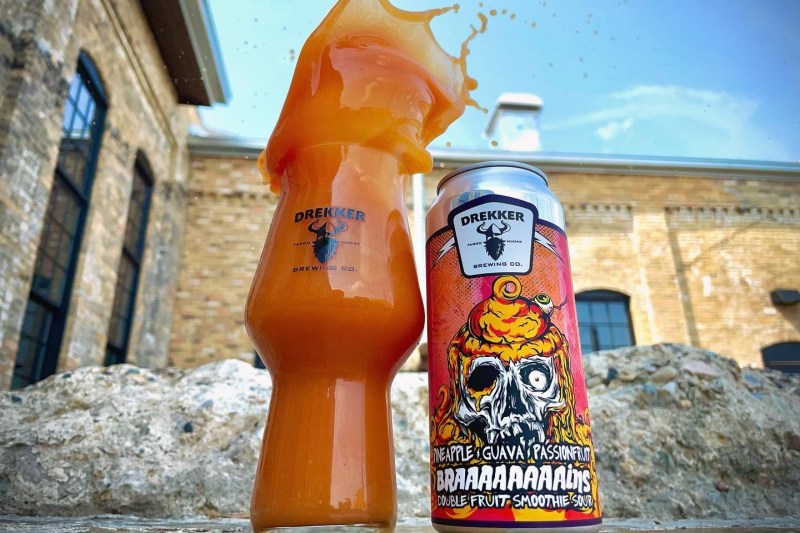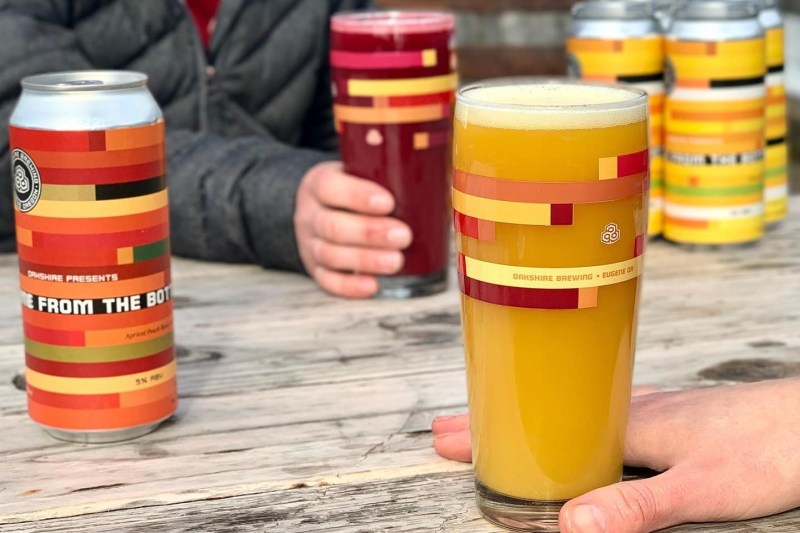First, there was the fruited sour beer. Then, the milkshake IPA. Today, we greet the smoothie sour with open and eager arms.
Not necessarily for the craft beer purist, the smoothie sour is pretty much like it sounds. Thick and driven by adjuncts like lactose and fresh berries, it’s a beer that functions a lot like, well, a smoothie. And while it sounds a little absurd on the surface, how we got here actually makes a lot of sense. Plus, from what we’ve tasted so far, they tend to be pretty delicious.
Related Reading
No, the smoothie sour is not yet as popular as the pilsner or hazy IPA and it almost surely never will be. But the trending brew is being fully embraced by some adventurous producers, from Eugene, Oregon to Fargo, North Dakota. It’s the continuation of an arc that began about a decade ago. Back then, palate-stretching beers like goses and kettle sours started to grow in popularity. So too did fruit-infused beers. A few years later, sparked by the haze craze in both beer and wine (looking at you, unfiltered natural wine), we no longer feared a cloudy beverage. In fact, it’s what many of us wanted most.

The latest on board the train of translucent beers is the smoothie sour. Many, we can fairly call opaque. They tend to come in bright colors, looking more like something the kids in Hook ate than a beer. Drekker Brewing out of Fargo has become an ambassador of the style. The brewery makes them in all shapes and sizes, from pineapple, guava, and passionfruit to a sour that’s designed to taste like a PB&J. The Coconut Key Lime Pie beer blends lime, coconut, banana, granola, lactose, cream cheese, and vanilla. In short, when Drekker is short on brewing supplies, what it adds to the grocery list is not very common.
Oakshire Brewing is all aboard, too. Dan Russo is Director of Brewing Operations at the Eugene brewery. He’s drawn to the epicurean wormhole you can really dive into when making and drinking this kind of beer. “I think it all has to do with the culinary aspect of the beers,” he says. “And the desire to use real ingredients to create flavors that are genuine and noticeable as such, as opposed to using flavorings.”
Soon, you can end up trying to recreate a favorite dish or dessert from your past. “You can get lost in the creation and drinking experience that you create, not just for yourself but for every person that tries it,” he says. “I think that chase and drive to create those experiences are the most intriguing part of the style and why we make them.”
Making a smoothie sour can be quite challenging. Fermenting at such a high gravity with more acidity can be tough on yeast. There’s a balancing act, too, with so many ingredients involved. And, because much of this is new, there’s no real reference point. The processing of weird ingredients for the first time is always a challenge as well,” Russo admits. “There are no instructions on the internet on how to add 200 pounds of no-bake cheesecake mix to a beer. So you end up going through some trial and error. Usually it ends up working out OK. It’s definitely always a wild ride, but once you get it right with any of the weird ingredients, then the next time you go to do it it ends up being a piece of cake — sometimes literally.”
A hiccup in one particular beer he made earlier this year resulted in some exploding cans. Now, Russo and his team pasteurize all the smoothie sours, just to be safe. Russo is fond of that volatile beer that re-fermented in the can, as he says it was his wildest creation yet. It was Oakshire’s first stab at a cheesecake beer, made with mango puree, raspberry puree, and graham cracker. They eventually made a birthday cake version, too, one Russo says was pretty wild and very polarizing. “I thought it was great,” he adds.
Perhaps the most important thing the smoothie sour is doing is pushing boundaries within beer making. “It’s taking the expectations and direction of beer in completely new ways,” he says.

Greeting the changing of the seasons, Russo and his team are already toying with some fall and winter smoothie sour options. I think my favorite idea is caramel apple pie for around the holidays,” he says. The beer involves Oregon-grown apple puree, apple pie spices, caramel sauce, and graham cracker. “We’re talking about a strawberry rhubarb cobbler version as well. I’ve also toyed with the idea of a pumpkin pie version, though I don’t know how people would react to that much pumpkin puree in a beer. We’ll see where it goes.”
The beer style is new enough that there are few to choose from online. However, expect that to change as retailers catch wine of the fascinating and wildly creative new style. In the meantime, keep an eye on producers like Oakshire, Drekker, Turning Point, Evil Twin, and Burley Oak. They are spearheading the trend and will continue to take the smoothie beer to greater acclaim.
Editors' Recommendations
- From $350 to $1,399: The 5 best outdoor pizza ovens in 2024
- What do WhistlePig Whiskey and the Super Troopers cast have in common?
- What is port wine? All the different types and how to drink it
- The 6 best SodaStream alternatives in 2024
- The 10 best places to order meat online in 2024


